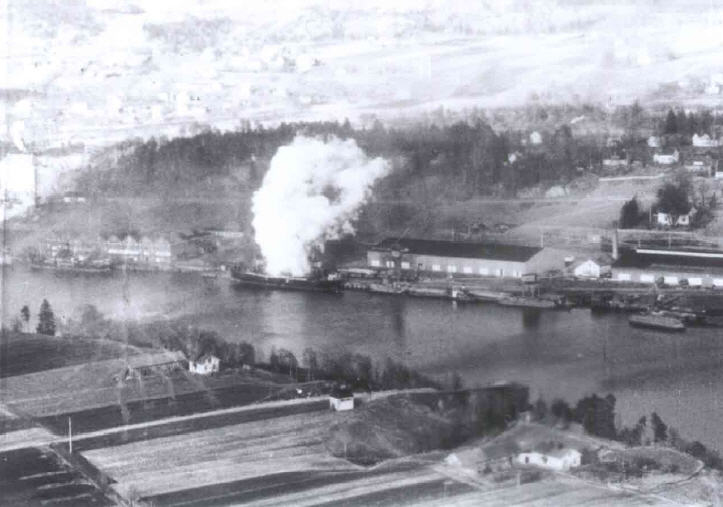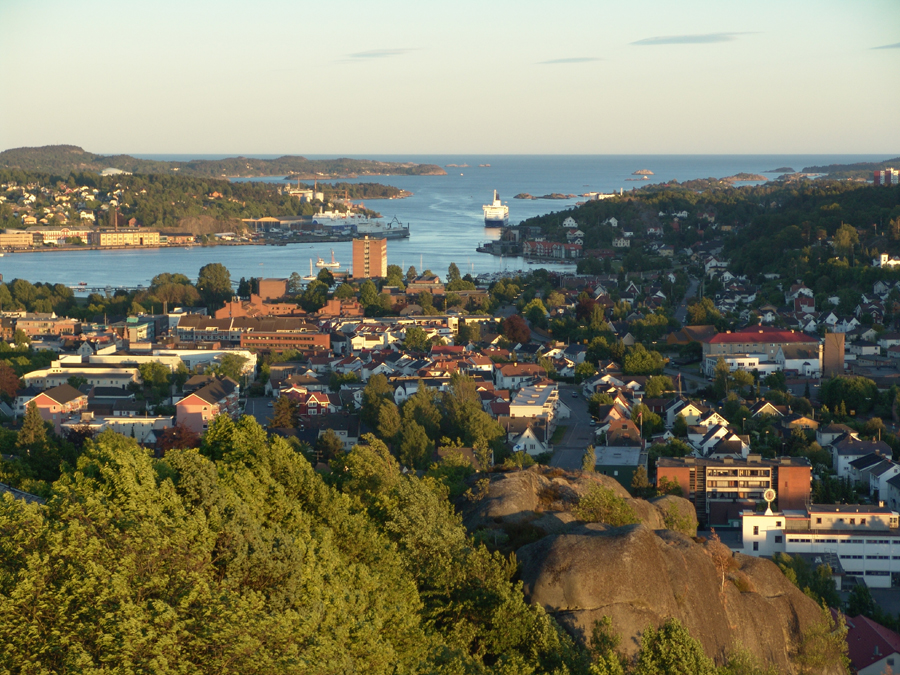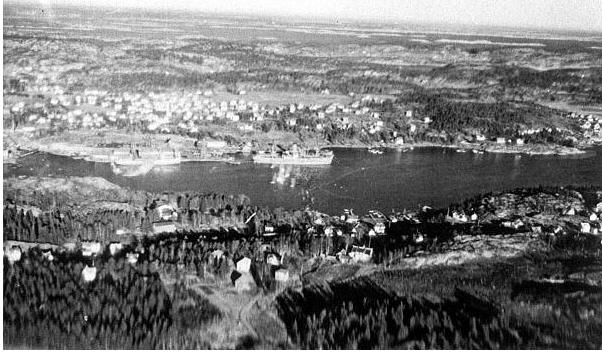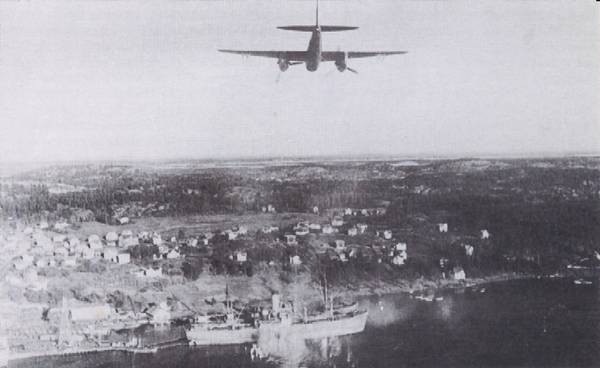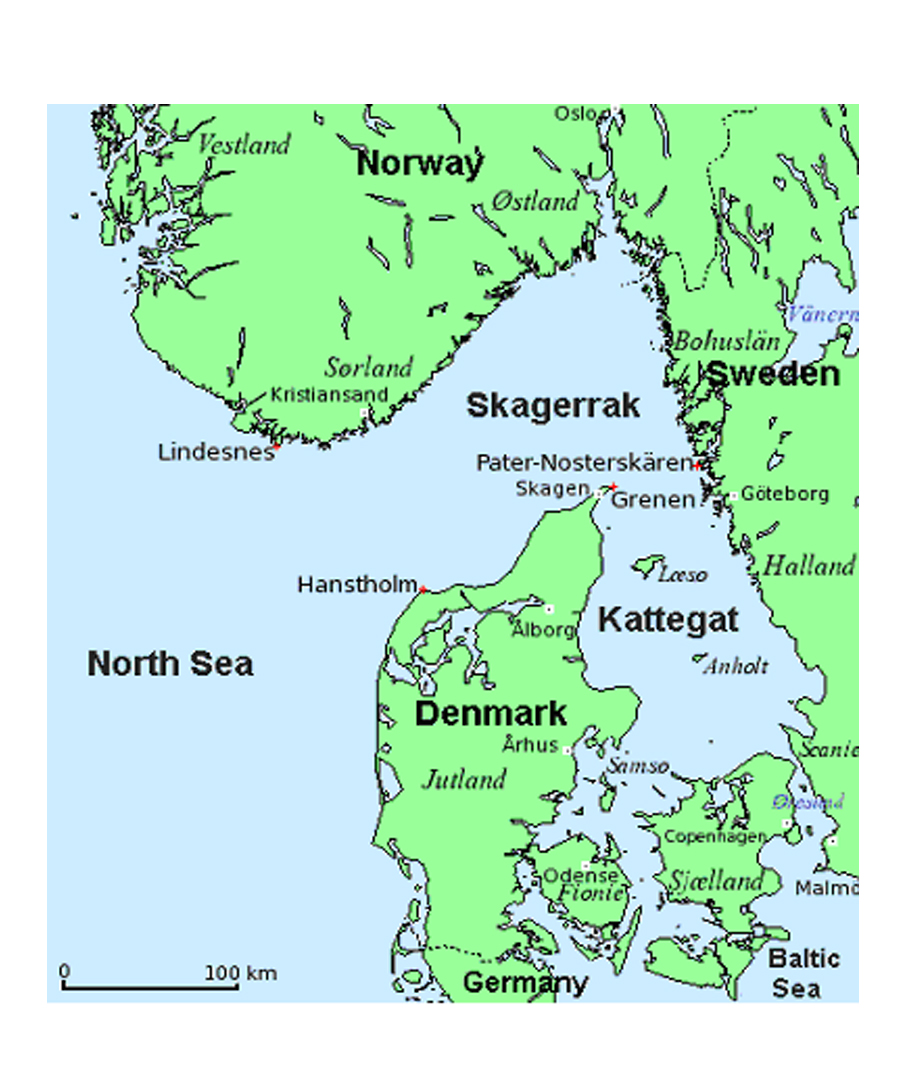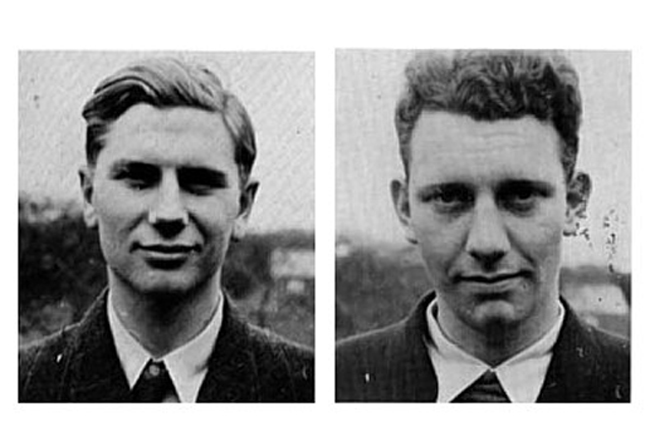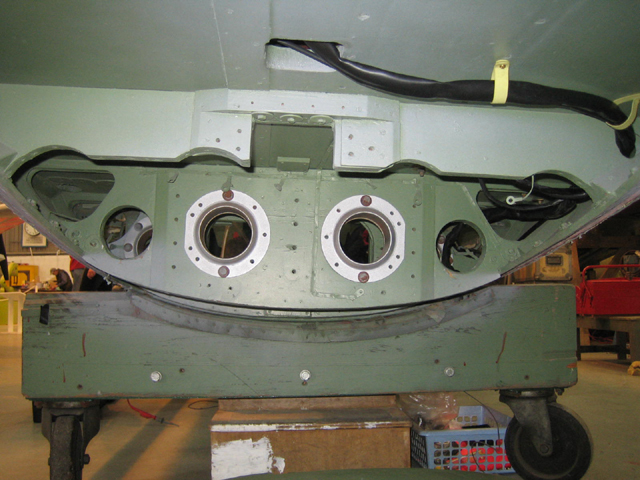
|
|
Diary - Ray Harington
Sunday 25/03/1945 - Raid on Norangsfjord
Sunday 25/03/1945 - Raid on NorangsfjordNorangsfjord is inland of Alesund and close to Leknes. The Norangsfjord is a branch of the Hjorundfjord, one of the most visually impressive fjords in Norway. On the morning of the 25th, morning reconnaissance patrols report the presence of 3 vessels in the Norangsfjord area. At 1336 hours 12 Mosquitos from 235 squadron, together with 2 from 333 squadron and the escorting Mustangs, take off. Wing Commander Simmonds is the strike leader. At 1545 hours 1 tanker and 3 merchantmen are sighted. The formation attacks, line astern. Ray Harington, in Mosquito “J”, becomes slightly separated from the force and performs a wingover and attacks a vessel near the shoreline in a steep dive due to the size of the surrounding cliffs. Hits are observed, but the vessel stays afloat. Some shells hit the surrounding rocks and shower the vessel with fragments of rock. The tanker is also hit, and both vessels are left damaged and smoking.
All
aircraft land back at base at 18.08 Monday 26/03/1945 – Thursday 29/03/1945 No engagements with enemy. 235 squadron released for training or weather deemed unfit for flying.
Friday
30/03/1945 – raid on Porsgrunn As WW2 drew to a close in 1945, due to it’s location it was also the primary port for the German evacuation from Norway. With reports from the morning reconnaissance sorties of targets in the area, the Banff wing was briefed and at 1327 hours a large strike force was airborne, consisting of; 14 aircraft from 235 squadron, including Pilot Officer Harington and Flight Sergeant Winwood, plus;
14
aircraft from 143 squadron together with 12 escorting Mustangs. The wing is lead by Wing Commander Simmonds in 235 Mosquito “N”. However, at 1425 hours Simmonds is forced to return to base with a faulty drop tank and Flight Lieutenant Knowles in 235 Mosquito “T” assumes control. The 2 333 squadron outriders approach Porsgrunn and advise the strike leader of vessels in the vicinity, and at 1550 hours the force attacks the shipping. Approaching at very low level, the attacks are highly successful, with the shipping holed by 127 rockets. The German vessel Scharnhorn (2643 tons) is sunk, together with the Norwegian vessels Qudrid Borgstad, Svanefjell, Gudrid and Torafire. Buildings in use by the Germans to store chemicals are also badly damaged. Flak was heavy, but much was silenced during the attacks.
Ray Harington remembers Porsgrunn as the first large raid he was involved in during his time in Banff. Flight Lieutenant Knowles had made the strike aware of high-tension electric cables in the area but, as Ray was forming on Flight Lieutenant Mayhew’s Mosquito (which proceeds to engulf his aircraft in smoke from rocket fire) and attacked, he saw a Mosquito crash into the ground just beyond the harbour. Concentrating on his attack, he scored 8 wet hits and strafed with cannon fire. Knowles’ Mosquito had most probably hit the cables and spun out of control. All remaining aircraft landed safely at 1851 hours. The picture taken below was used by the press at the time for reporting purposes, and for propaganda purposes reports the smoking Mosquito “T” as a hit on a factory.
Saturday, 31/03/1945 – Sunday 01/04/1945 No engagements with enemy. 235 squadron released for training. Monday 02/04/1945 – raid on Sandefjord
Tuesday,
03/04/1945 – Wednesday 04/04/1945 No
engagements with enemy. 235 squadron released for training. Training flights
over Portsoy. Thursday 05/04/1945 –Kattegat/ Skagerrak Patrols The Kattegat is a sea area bounded by Jutland (Denmark), and Scania, Halland and Bohuslän (Sweden). The Baltic Sea drains into the Kattegat through the Oresund and the Danish Straits. During 1945 this area witnessed heavy U-boat activity, and on this date 39 Mosquitos with 12 Mustang escorts was led by the outriders looking for enemy vessels. At 1435 hours enemy vessels were spotted; at wave height the force attacks, led by Wing Commander Simmonds, firing rockets and strafing with cannon. Mosquito 235 “U” flown by Pilot Officers Arthurs and Richardson hit a mast of one of the vessels and spins in, crashing just beyond the enemy vessel. The Banff wing has experienced a few instances of hitting enemy shipping due to the extreme low level operations, and this is bought home to the witnesses who see colleagues crash with no hope of escape at such low altitudes. Whilst returning via the Danish coast, Ray Harington, flying 235 Mosquito “F”, performs a sudden manoeuvre to avoid another Mosquito which is taking evasive action due to flak over Mors. The left propeller is damaged, possibly having clipped the ground. At such low altitude and struggling to control the aircraft, the crew elect to belly land. Without flaps, the Mosquito crash lands, and to this day Ray remembers the fear of such a low level rapid crash land. Popping the hatch, both crew members escape unhurt.
Postscript 235 Mosquito “F” (Freddie) had crashed in Northern Denmark at Tandrup. After considering their position, they got in contact with some farm hands who did not speak English. Soon the ammunition started exploding and they moved away from the aircraft and met Mrs. Lutzhoft who spoke English. She advised them to hide in a haystack a little distance away. This they did and in the evening Mrs. Lutzhoft brought them food. Later they were contacted by members of the resistance Richard Jensen and Ernfred Østergård who took the flyers to the churchyard of Bedsted where they waited while civilian clothes was brought for the flyers. In a cab driven by Peter Nielsen they were taken to his home in Skjoldbjerg. After a most welcome meal the flyers were taken to the house of Reverend Hans Dahl-Hansen where they slept until the next day. Next they moved to the farm of Henry Christensen in Harring where they spent most of the night on the loft of a piggery, as Christensen had visitors in his house. Only when they had left could the flyers be brought into the house. From the farm they were taken to Anna and Eigil Møller in Thisted where false ID-cards with photos of look alike were provided, Peter Nielsen then took them to “Markvardsens Hotel” in Nykøbing Mors. En route they were stopped by German sentries by the “Vildsund broen” bridge, but the new ID-cards got them through. The next day they were photographed and provided with new ID-cards with their own pictures and moved to a garden house belonging to Niels Schmidt. In Nykøbing they were able to walk around freely.
After about three days in Nykøbing Mors the journey continued to Aalborg by train via Hvalpsund. At the railway station in Aalborg they were met by Knud Nielsen who took them to the office of Svend Andersen and later to his home. Here they stayed for about eight days before they were driven to Strandby north of Frederikshavn by Carl Pedersen. They were billeted for the night at the house of a teacher until they could be transferred to the fishing boat “Henny” FN 3 with Skipper Herluf Aaen. In mid Kattegat they transferred to a larger vessel with Skipper Andreas and sailed to Göteborg where they arrived on 24th April 1945. Many RAF and USAAF crews had used Sweden as an optional landing site and were thus considered internees; Ray and Bert were European refugees and were flown back to Scotland on the 2nd May 1945. After almost a month on the run, Ray’s young wife Betty and family had no idea as to his whereabouts, and were obviously much relieved to see them safely home after weeks of no news. Ray then celebrated his 22nd birthday a few days later on the 6th May. Mosquito "F" Freddie refuses to disappear despite the Germans quickly removing the wreckage after the crash land. 1) The 235 Squadron picture in the website is taken with “F” Freddie in the background. 2) Ray has kept in touch with the people who helped him avoid falling into German hands, and on a visit to Denmark in 1960 was informed one of the cannons from “F” was hidden in a farmhouse before the Germans arrived on the scene. This was mysteriously delivered to Ray in 1996 and has been donated to the Mk VI Mosquito reconstruction at the DeHavilland museum, Salisbury hall (see links). Soon to be reinstalled into a Mk VI Mosquito.
|
| © Robbie Reid 2010 |

